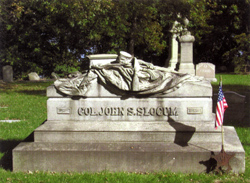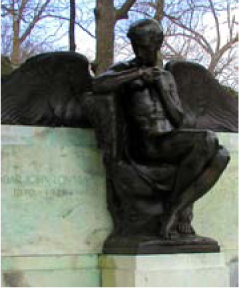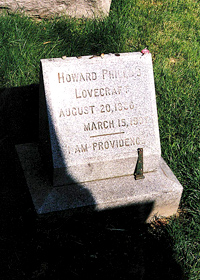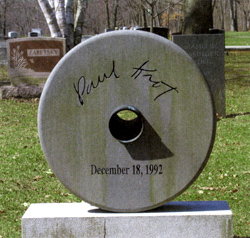Civil War Veterans interred at Swan Point Cemetery
This is only a partial listing. There are over six hundred persons interred here who served their country in which many of their epitaphs call “The Great Rebellion.” Some of these men gave the ultimate sacrifice for “The noble cause of vindicating the constitution and laws of this country.” (Charles M. Read: fell at Antetiam, 1862)
Medal of Honor Recipients
| NAME | LOT | GROUP |
|---|---|---|
| Benjamin Ham Child | 14 | 161 |
| George Warren Potter | 52 | 374 |
| Edward Parsons Tobie | 8 | 178 |
Union Brevet Brigadier Generals Interred at Swan Point Cemetery
| NAME | LOT | GROUP | TERM | RANK |
|---|---|---|---|---|
| William Ames | 2 | 42 | Born: Providence, RI 05/15/1842 Died: 03/03/1914 | Lt. Col., 3rd Rhode Island Bvt. Bg, Usv 03/13/1865 |
| Richard Arnold | 168 | FUS | Born: Providence, RI 04/12/1828 Died: Governors Island, NY 11/08/1882 | |
| Joseph Pope Balch | R | Born: Providence, RI 08/09/1822 Died: Providence, RI 12/02/1872 | Major – 1st Rhode Island Det Mi, Bvt. Bg, Usv 03/13/1865 | |
| Charles Ray Brayton | 11 | 294 | Born: Apponaug, RI 08/16/1840 Died: Providence, RI 09/23/1910 | Col., 3rd Rhode Island Hvy Arty, Bvt. Bg, Usv 03/13/1865 |
| Ambrose Everett Burnside | 3 | 286 | Born: Liberty Union County, IN 05/23/1824 Died: Bristol, RI 09/13/1881 | |
| John Gardner Hazard | 3 | 283 | Born: Exeter, RI 04/15/1832 Died: Providence, RI 05/15/1895 | Col., 5th Us Veteran Vols. Bvt. Bg, Usv 03/13/1865 |
| Herbert Lefavour | 8 | 309 | Born: Pawtucket, RI 05/03/1837 Died: Pawtucket, RI 02/25/1878 | Col., 22nd Michigan Infantry Bvt. Bg, Usv 03/13/1865 |
| Horatio Rogers, Jr. | 7 | 207 | Born: Providence, RI 05/18/1836 Died: Providence, RI 11/12/1904 | Col., 2nd Rhode Island Infantry, Bvt. Bg, Usv 03/13/1865 |
| David Hammond Vinton | 4 | 115 | Born: Providence, RI 05/04/1803 Died: Stamford, CT 02/21/1873 | Lt. Col., Deputy Qm Bvt. Bg, Usa 03/13/1865 |
| Francis Laurens Vinton | 267 | Born: Fort Preble, ME 06/01/1835 Died: Leadville, CO 10/06/1879 |
Governors of Rhode Island Interred in Swan Point Cemetery
| NAME | TERM | LOT | GROUP |
|---|---|---|---|
| William Jones | 1811-1817 | 7 | 204 |
| Lemuel Hastings Arnold | 1831-1833 | 168 | FUS |
| William Sprague | 1838-1839 | 163 | |
| Thomas Wilson Dorr | 1842 | 2 | 215 |
| Henry Bowen Anthony | 1849-1851 | 5 | 311 |
| William Warner Hoppin | 1854-1857 | 4A | 192 |
| Elisha Dyer | 1857-1859 | 1 | 196 |
| William Sprague 2nd | 1860-1863 | 273-1/2 | |
| James Young Smith | 1863-1866 | 59 | |
| Ambrose Everett Burnside | 1866-1869 | 3 | 286 |
| Seth Padelford | 1869-1873 | 1 | Central |
| Henry Lippitt | 1875-1877 | S | |
| Alfred Henry Littlefield | 1880-1883 | 4 | 287 |
| Augustus Osborn Bourn | 1883-1885 | 2 | 176 |
| Royal Chapin Taft | 1888-1889 | 2 | 87 |
| Herbert Warren Ladd | 1889-1890 | 77 | |
| Daniel Russell Brown | 1892-1895 | 4 | 394 |
| Charles Warren Lippitt | 1895-1897 | 1 | 260 |
| Elisha Dyer, Jr. | 1897-1900 | 1 | 196 |
| Charles Dean Kimball | 1901-1903 | 11 | 394 |
| Lucius Fayette Clark Garvin | 1903-1905 | 41 | 394 |
| Norman Stanley Case | 1928-1933 | 50 | 403 |
| Theodore Francis Green | 1933-1937 | 85 |
Other Notable Persons Interred at Swan Point
William Sprague III (1799-1856)
Industrialist and 14th Governor of Rhode Island, he was also a U.S. Representative and U.S. Senator.
Thomas Coles Hartshorn (1800-1854)
The founder of Swan Point Cemetery, he was a preceptor at a private classical school in Providence. He spent the last few years before his death as a clerk at Swan Point.
James C. Bucklin (1801-1890)
A gifted architect who contributed a great deal to Providence’s finest building projects including the Arcade, the Beneficent Congregational Church, Manning Chapel at Brown University and the Rhode Island Historical Society Cabinet.
Thomas Wilson Dorr (1805-1854)
Politician, attorney and reformer, Dorr’s family owned the Bernon Mills, a textile mill in Woonsocket. Dorr was best known for his role in The People’s Convention, a group pushing for a new state constitution, and the Dorr Rebellion, a short-lived movement (1841-1843) led by Dorr to abolish property requirements for the right to vote. In 1843, after an unsuccessful attempt to change the constitution by an armed insurrection, Dorr was arrested, tried for treason and sentenced to life in prison with hard labor. After serving 20 months, he was pardoned and released. His civil rights were restored in 1851.
Elizabeth Buffum Chace (1806-1899)
A daughter of abolitionist Arnold Buffum, her home in Central Falls was one of Rhode Island’s few documented stops along the underground railroad. After the Civil War, she was very involved with temperance, women’s voting rights and higher education. She was active in securing admission of women to Brown University.
Joseph R. Brown (1810-1876)
Founder and creative genius of the country’s most important precision tool company, Brown and Sharpe.
William Grosvenor (1810-1888)
Providence physician, textile mill owner, and member of the Rhode Island State Senate.
Elisha Dyer (1811-1890)
The 25th Governor of Rhode Island, he was a graduate of Brown University, a member of the Providence School Committee and President and Director of the Exchange Bank. He was a member of the U.S. Agricultural Society, the Rhode Island Art Association and an active member of the Freemasons. After his administration, Dyer captained a company of Rhode Island volunteers for the Civil War.
Henry Lippitt (1816-1881)
A textile manufacturer, he served as governor of Rhode Island from 1875-1877.
Mary Ann Balch Lippitt (1823-1889)
Henry’s wife, she became an advocate of the deaf following their daughter Jeanie’s affliction during a bout of scarlet fever at the age of four.
George H. Corliss (1817-1888)
One of the most important industrialists of the nineteenth century, Corliss developed and manufactured the world’s most powerful and almost universally employed steam engines.
Ambrose E. Burnside (1824-1881)
Burnside was a politician, a soldier, an inventor and an industrialist. Rhode Island’s 30th Governor, he served as a U.S. Senator and was a Union General in the Civil War. His distinctive style of hair is now known as sideburns, derived from his last name.
Colonel John Stanton Slocum (1824-1861)
 Active abolitionist and attorney, Slocum was a well-respected veteran of the War with Mexico and led the Second Rhode Island Regiment in the Battle of Bull Run where he fell on July 21, 1861.
Active abolitionist and attorney, Slocum was a well-respected veteran of the War with Mexico and led the Second Rhode Island Regiment in the Battle of Bull Run where he fell on July 21, 1861.
Thomas Alexander Tefft (1826-1859)
A gifted architect and graduate of Brown University, Tefft was the architect most associated with the Swan Point’s early years.
Jesse Metcalf (1827-1899)
Founder of Wanskuck Mills, he was one of Rhode Island’s leading industrialists.
Helen Adelia Rowe Metcalf (1830-1895)
Jesse Metcalf’s wife, she founded the Rhode Island School of Design. She was praised as a benefactor of the poor, even extending generosity to striking workers at her husband’s company.
Descendants of the Metcalfs include a United States Senator and publishers of the Providence Journal.
Sarah Elizabeth Doyle (1830-1922)
Longtime schoolteacher and principal, she was a charter member of the corporation of the Rhode Island School of Design, leader of the Rhode Island Society for the Collegiate Education of Women, which sponsored the establishment of Pembroke College at Brown University, and an ardent, early supporter of women’s suffrage.
William Sprague IV (1830-1915)
Industrialist and 27th Governor of Rhode Island, and a U.S. Senator, he participated in the First Battle of Bull Run in the Civil War.
Jerothmul B. Barnaby (1830-1889)
A highly successful dry goods merchant, he served on the Providence City Council from 1870-1879 and served in the Rhode Island legislature for one year.
Alfred E. Stone (1834-1908)
Providence architect and founding partner of the Stone, Carpenter and Willson architectural firm, he designed many prominent Providence area buildings including the Providence Public Library, Union Station and several buildings on the Brown University campus. Stone had a keen interest in land use issues and played a key role in guiding Swan Point Cemetery’s late nineteenth century expansion, continuing the precepts of the original design. Stone served as the cemetery Director and the last 12 years as President, from 1876 until his death in 1908.
Robert H.I. Goddard (1837-1916)
A prominent banker, industrialist, U.S. Army officer, state senator and philanthropist, Robert Hale Ives Goddard was the son of Professor William Giles Goddard and Charlotte Rhoda Ives Goddard. Born in Providence, he was a graduate of Brown University. After leaving Brown, he began his business career with the Goddard Brothers, a Lonsdale, R.I. textile manufacturing firm. Goddard served with distinction in the Union Army in the Civil War, attaining the rank of Colonel. In 1865 at the end of the war, he resigned from the army and served as a military aide to four governors from 1874-1883. In 1870, Goddard married Rebekah Burnet Groesbeck of Cincinnati, Ohio. Together they had two sons and a daughter. Goddard served in the RI Senate from 1907-1908 as a member of the finance committee and as chairman of the education committee. He was a director of the RI Hospital Trust Company and owned a controlling interest in the Providence and Worcester Railroad. In 1927, Goddard’s family deeded his 489-acre estate in Warwick, RI to the state of RI. It is now the grounds of the Goddard Memorial State Park.
Nelson W. Aldrich (1845-1917)
Regarded as one of the most influential politicians of his time, Aldrich was a businessman, investor, and U.S. senator from 1881-1911 and served as chairman of the Senate Finance Committee. He also served as President of the Providence City Council and Speaker of the Rhode Island House of Representatives.
Isaac Comstock Bates (1843-1913)
A wealthy meat provisioner who played a significant role in Providence’s art community, he was a Director of Rhode Island School of Design and President of RISD from 1910-1913.
Timothy McCarthy (1846-1911)
Founding organizer and President of the New England Cemetery Association, he served as Swan Point Cemetery’s third superintendent for 35 years.
Engelhart Cornelius Ostby (1847-1912)
Co-founder of Ostby and Barton Jewelers of Providence, Ostby was born in 1847 in Oslo, Norway, where he worked as a successful jeweler. In 1869, he emigrated to America and settled in Providence. In addition to being recognized as a successful businessman (Ostby and Barton became the world’s largest producer of gold rings), Ostby was well-known in Providence for his charitable acts. He was also a director of the High Street Bank and the Industrial Trust Company and a trustee of Citizens Savings Bank. Ostby and his wife Lizzy Macy (Webster) Ostby had 4 sons and a daughter. After his wife’s death at age 45, Ostby raised his youngest children with the help of his mother. In January 1912, Ostby and his 22 year-old daughter Helene traveled to Europe to take a vacation and survey the European jewelry markets. While in France, they boarded the Titanic as first-class passengers to make their journey back to America. After the ship collided with an iceberg, Ostby went back to his room to get warmer clothes for himself and his daughter. In the meantime, Helene was forced to board a lifeboat and survived. Her father’s body was subsequently recovered and identified in Halifax, Nova Scotia. He was buried at Swan Point Cemetery on May 11, 1912. When Helene died in 1978 at the age of 89, she was buried close to her father.
Marsden J. Perry (1850-1935)
Financier, utilities and transportation magnate, and art collector, he lived in the John Brown House from 1902 to 1935. Marsden’s tomb at Swan Point reproduces, full-scale, the principal entrance of the John Brown House.
Sydney Richmond Burleigh (1853-1931)
Burleigh was an artist known for his watercolors, oil paintings, illustrations and building and furniture designs. He was the founder of the Providence Art Club, taught at Rhode Island School of Design and served on the school’s board of directors and trustees.
Lucy Truman Aldrich (1869-1955)
A philanthropist and art collector, she was the eldest child of Rhode Island U.S. Senator Nelson Aldrich. Having traveled extensively throughout Europe and Asia, she was a major collector of Orientalia. She donated most of her collection to the Rhode Island School of Design Museum.
Edgar John Lownes (1870-1924)
 A Providence industrialist, philanthropist, and supporter of educational institutions, Lownes founded the American Silk Spinning Company. He was involved in a number of fraternal organizations and community enterprises including the Providence Music League, the Visiting Committee of Brown University and the Textile Committee of Rhode Island School of Design. He served as Director of the Providence Institution for Savings, the Industrial Trust Company, the Narragansett Puritan Life Insurance Company, the Church House of Providence, the Narragansett Pier Improvement Society and the Shannon Copper Corporation.
A Providence industrialist, philanthropist, and supporter of educational institutions, Lownes founded the American Silk Spinning Company. He was involved in a number of fraternal organizations and community enterprises including the Providence Music League, the Visiting Committee of Brown University and the Textile Committee of Rhode Island School of Design. He served as Director of the Providence Institution for Savings, the Industrial Trust Company, the Narragansett Puritan Life Insurance Company, the Church House of Providence, the Narragansett Pier Improvement Society and the Shannon Copper Corporation.
Alice Winsor Hunt (1872-1968)
In an era where few women enjoyed higher education, Hunt was a graduate of Classical High School and Wellesley College. After ten years of teaching, she dedicated her life to reform. Her pet project was children’s welfare and the results of her efforts brought about child labor laws and the state juvenile court system.
William T. Aldrich (1880-1966)
One of the best and often overlooked architects of the early twentieth century, Aldrich was a graduate of Massachusetts Institute of Technology and Ecole des Beaux-Arts in Paris. He had a thriving practice in country house design and also designed museums, government buildings and academic buildings on college campuses including the Rhode Island School of Design, and Harvard University.
Howard Phillips Lovecraft (1890-1937)
 Often credited as H.P. Lovecraft, Howard Phillips Lovecraft was an American author of horror, fantasy and science fiction. Born in Providence in 1890, the son of Winfield Scott Lovecraft and Sarah Susan Phillips Lovecraft, he is regarded as one of the most influential horror writers of the 20th century. Lovecraft died in 1937 at the age of 46 and was laid to rest in the Phillips family lot at Swan Point Cemetery. Lovecraft, along with his parents, is listed on the Phillips family monument. In 1977, a group of loyal Lovecraft fans raised money to buy him a headstone of his own on which they had inscribed Lovecraft’s name, the dates of his birth and death, and the phrase “I AM PROVIDENCE,” a line from one of his personal letters.
Often credited as H.P. Lovecraft, Howard Phillips Lovecraft was an American author of horror, fantasy and science fiction. Born in Providence in 1890, the son of Winfield Scott Lovecraft and Sarah Susan Phillips Lovecraft, he is regarded as one of the most influential horror writers of the 20th century. Lovecraft died in 1937 at the age of 46 and was laid to rest in the Phillips family lot at Swan Point Cemetery. Lovecraft, along with his parents, is listed on the Phillips family monument. In 1977, a group of loyal Lovecraft fans raised money to buy him a headstone of his own on which they had inscribed Lovecraft’s name, the dates of his birth and death, and the phrase “I AM PROVIDENCE,” a line from one of his personal letters.
Barnaby Keeney (1914-1980)
A descendant of Jerothmul Barnaby, he was President of Brown University from 1955-1966.
Paul Krot (1919-1992)
 Founder of Sprint Systems of Photography, he was an applied chemist, an inventor and a legendary photography instructor at Rhode Island School of Design.
Founder of Sprint Systems of Photography, he was an applied chemist, an inventor and a legendary photography instructor at Rhode Island School of Design.
